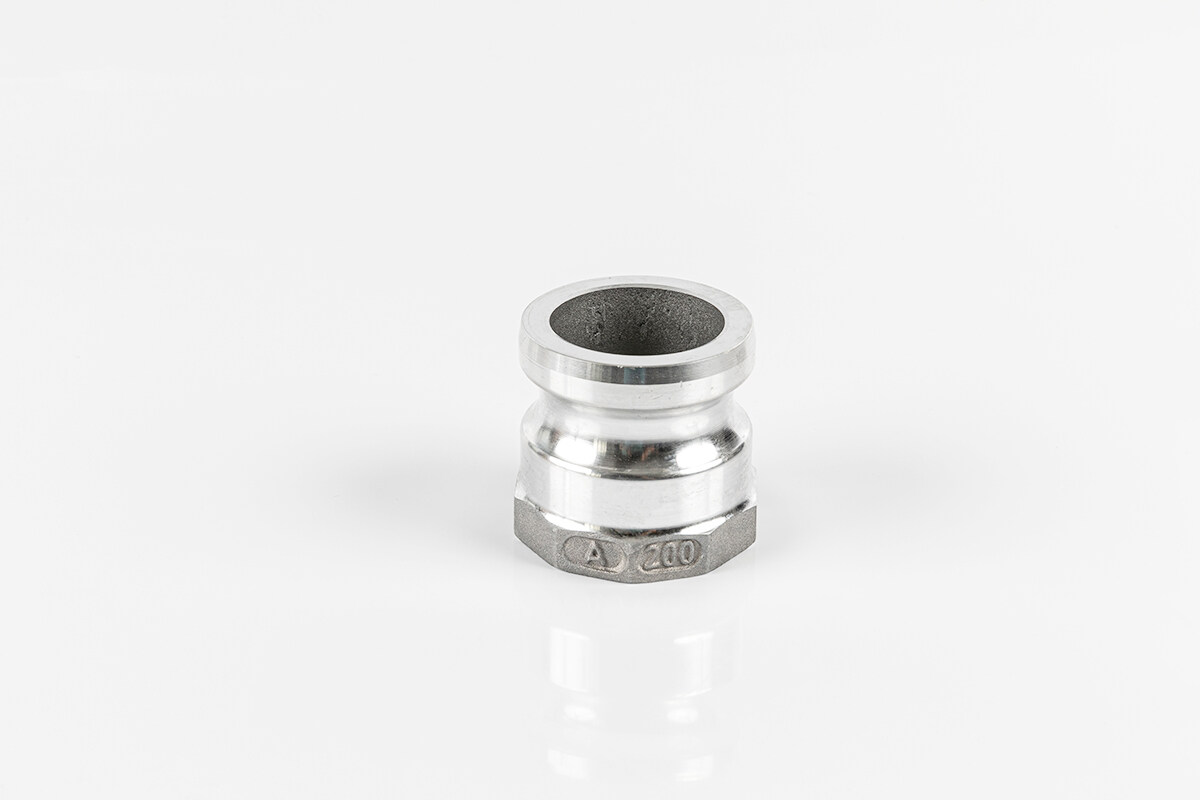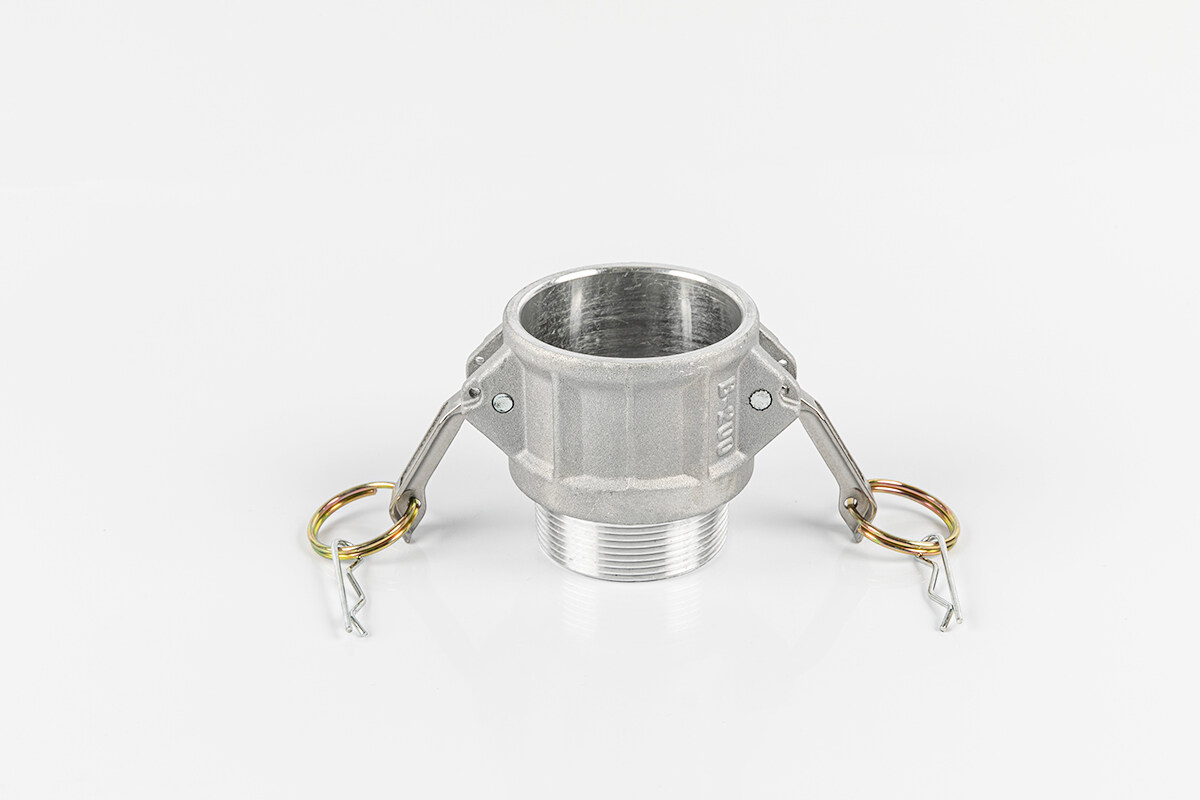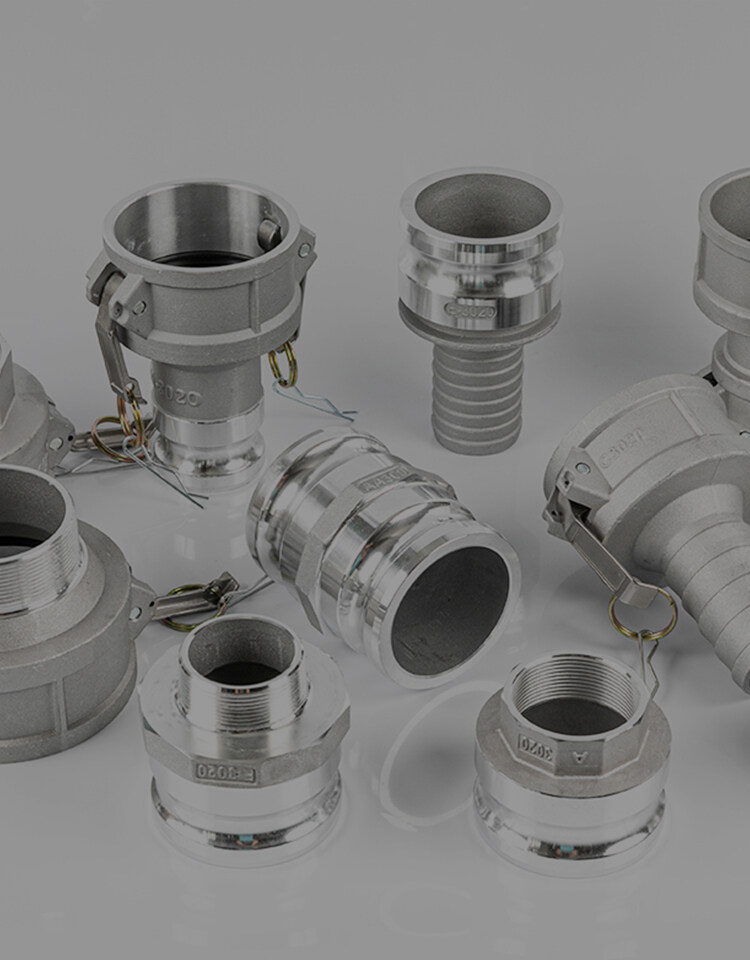Erreur de format d'e-mail
emailCannotEmpty
emailDoesExist
pwdLetterLimtTip
inconsistentPwd
resetAccountPassword
forTheAccount
pwdLetterLimtTip
inconsistentPwd
resetSuccess
resetSuccessTips
login

Nouvelles
Ici, vous pouvez décrire un morceau de texte que vous souhaitez exprimer

Mastering Camlock Couplings in Fluid Systems
2023-10-25 17:46:21
In the vast landscape of fluid transfer systems, there's a silent hero that ensures liquids and gases flow seamlessly from one place to another - the camlock coupling. These unassuming yet indispensable connectors have revolutionized the way industries handle fluid transfer. In this comprehensive guide, we'll embark on a journey to discover the multifaceted world of camlock couplings. From their historical roots to their cutting-edge applications, and from choosing the right type to exploring their future possibilities, this guide is your ultimate resource for understanding and harnessing the power of camlock couplings.
Chapter 1: The Birth of Camlock Couplings: Origins
1. Historical context and development: The camlock coupling, often referred to as a "cam and groove coupling," has a rich history dating back to the mid-20th century. Initially designed for military applications, it quickly found its way into various industries.
2. The emergence of camlock coupling factory: As the demand for camlock couplings grew, specialized factory began to manufacture these connectors, bringing about standardization and improved production techniques.
2. The emergence of camlock coupling factory: As the demand for camlock couplings grew, specialized factory began to manufacture these connectors, bringing about standardization and improved production techniques.
Chapter 2: Understanding the Anatomy of Camlock Couplings: Components and Design
1. Overview of key components: They consist of male and female couplers, each with a cam groove and a gasket. They are designed for quick and secure connections.
2. Camlock coupling type A: The archetype: Type A couplings, featuring a male adapter and female coupler with arms, serve as the foundation for other types. Their simplicity and effectiveness are unmatched.
3. Variations in design: The design has evolved over time, leading to different types such as B, C, D, E, F, and more, each catering to specific applications and industries.
2. Camlock coupling type A: The archetype: Type A couplings, featuring a male adapter and female coupler with arms, serve as the foundation for other types. Their simplicity and effectiveness are unmatched.
3. Variations in design: The design has evolved over time, leading to different types such as B, C, D, E, F, and more, each catering to specific applications and industries.
Chapter 3: Applications Across Industries: The Many Sectors Served
1. Oil and gas industry: They are widely used for the rapid transfer of petroleum, chemicals, and other fluids in this sector, enabling efficient operations and minimizing downtime.
2. Agriculture and irrigation: Farmers rely on camlock couplings to connect hoses and pipes, making irrigation and chemical applications more efficient.
3. Chemical processing: The chemical industry values the chemical compatibility, ensuring safe and efficient transfer of various substances.
4. Food and beverage: Hygienic camlock couplings are essential in the food and beverage industry, allowing for contamination-free fluid transfer.
5. Firefighting and emergency services: In emergency situations, camlock couplings are crucial for rapid deployment of water or foam solutions.
6. Pharmaceutical industry: Maintaining sterility and preventing contamination are paramount in pharmaceuticals, and camlock couplings deliver on these requirements.
7. Others: They find applications in countless other industries, from construction to wastewater management, due to their adaptability and reliability.
2. Agriculture and irrigation: Farmers rely on camlock couplings to connect hoses and pipes, making irrigation and chemical applications more efficient.
3. Chemical processing: The chemical industry values the chemical compatibility, ensuring safe and efficient transfer of various substances.
4. Food and beverage: Hygienic camlock couplings are essential in the food and beverage industry, allowing for contamination-free fluid transfer.
5. Firefighting and emergency services: In emergency situations, camlock couplings are crucial for rapid deployment of water or foam solutions.
6. Pharmaceutical industry: Maintaining sterility and preventing contamination are paramount in pharmaceuticals, and camlock couplings deliver on these requirements.
7. Others: They find applications in countless other industries, from construction to wastewater management, due to their adaptability and reliability.
Chapter 4: Choosing the Right Camlock Coupling: Selecting the Perfect Fit
1. Material considerations: Different materials like aluminum, stainless steel, brass, and polypropylene offer varying levels of durability and corrosion resistance, allowing you to select the most suitable option.
2. Temperature and pressure compatibility: Matching the camlock coupling to the operating conditions is essential to prevent leaks, failures, and accidents.
3. Chemical compatibility: Ensuring that the materials used in the coupling are compatible with the transferred fluids is critical to maintain safety and performance.
4. Size and configuration options: The right size and configuration make all the difference, so understanding the options available is crucial for optimal performance.
2. Temperature and pressure compatibility: Matching the camlock coupling to the operating conditions is essential to prevent leaks, failures, and accidents.
3. Chemical compatibility: Ensuring that the materials used in the coupling are compatible with the transferred fluids is critical to maintain safety and performance.
4. Size and configuration options: The right size and configuration make all the difference, so understanding the options available is crucial for optimal performance.
Chapter 5: Maintenance and Safety: Ensuring Longevity and Preventing Hazards
1. Proper cleaning and maintenance: Regular inspection, cleaning, and lubrication can extend the lifespan of camlock couplings and prevent operational issues.
2. Safety precautions and best practices: Implementing safety protocols, such as properly locking couplers and using appropriate personal protective equipment, ensures a secure working environment.
3. Troubleshooting common issues: Knowing how to address issues like leaks and jammed couplers can save time and money in the long run.
2. Safety precautions and best practices: Implementing safety protocols, such as properly locking couplers and using appropriate personal protective equipment, ensures a secure working environment.
3. Troubleshooting common issues: Knowing how to address issues like leaks and jammed couplers can save time and money in the long run.
Chapter 6: Innovations and Future Trends: The Camlock Coupling of Tomorrow
1. Advancements in materials: Ongoing research and development are leading to new materials with enhanced properties, improving the efficiency and reliability of camlock couplings.
2. Smart camlock couplings: Integration with IoT and sensor technology is poised to make them smarter, allowing for real-time monitoring and data-driven decision-making.
3. Environmental sustainability: The industry is increasingly focused on eco-friendly materials and manufacturing processes to reduce the environmental impact.
2. Smart camlock couplings: Integration with IoT and sensor technology is poised to make them smarter, allowing for real-time monitoring and data-driven decision-making.
3. Environmental sustainability: The industry is increasingly focused on eco-friendly materials and manufacturing processes to reduce the environmental impact.
Chapter 7: Camlock Coupling Manufacturers: A Comparative Analysis: Top Industry Players
1. Leading camlock coupling manufacturer: We explore the reputations, product ranges, and global reach of key manufacturers in the market.
2. A look at their product offerings: A detailed comparison of the product lines offered by these manufacturers to help you make informed choices.
3. Customer testimonials and reviews: Real-world experiences from users shed light on the performance and reliability of different camlock coupling brands.
2. A look at their product offerings: A detailed comparison of the product lines offered by these manufacturers to help you make informed choices.
3. Customer testimonials and reviews: Real-world experiences from users shed light on the performance and reliability of different camlock coupling brands.
Chapter 8: Case Studies: Real-World Applications: Success Stories
Case study 1: In the oil and gas industry: A deep dive into how camlock couplings have revolutionized fluid transfer in this critical sector.
Case study 2: In the food and beverage sector: A closer look at how these connectors maintain the integrity and hygiene of products.
Case study 3: In emergency services: Highlighting their role in firefighting and disaster response scenarios.
Case study 2: In the food and beverage sector: A closer look at how these connectors maintain the integrity and hygiene of products.
Case study 3: In emergency services: Highlighting their role in firefighting and disaster response scenarios.
Chapter 9: Camlock Couplings in a Global Context: International Use and Regulations
1. Global adoption and acceptance: They have become a global standard, finding acceptance in various international industries.
2. Industry standards and certifications: The importance of adhering to industry standards and certifications to ensure safety and quality.
2. Industry standards and certifications: The importance of adhering to industry standards and certifications to ensure safety and quality.
Chapter 10: Conclusion and Future Prospects: Summing it All Up
1. The indispensable role: These connectors have transformed fluid transfer, making it safer, more efficient, and adaptable to diverse industries.
2. A look into the future: The evolving landscape of camlock couplings and their increasing importance in a world driven by efficiency and sustainability.

2. A look into the future: The evolving landscape of camlock couplings and their increasing importance in a world driven by efficiency and sustainability.

In conclusion, this comprehensive guide has delved into the world of camlock couplings, offering a deep understanding of their history, design, applications, and factors to consider when choosing the right type. We've explored their pivotal role in various industries, emphasized safety and maintenance practices, peeked into the future of these versatile connectors, and compared top manufacturers in the field. Armed with this knowledge, you are now well-prepared to make informed decisions and harness the full potential of camlock couplings in your fluid transfer systems.
Article précédent
Prochain article
Nous contacter

